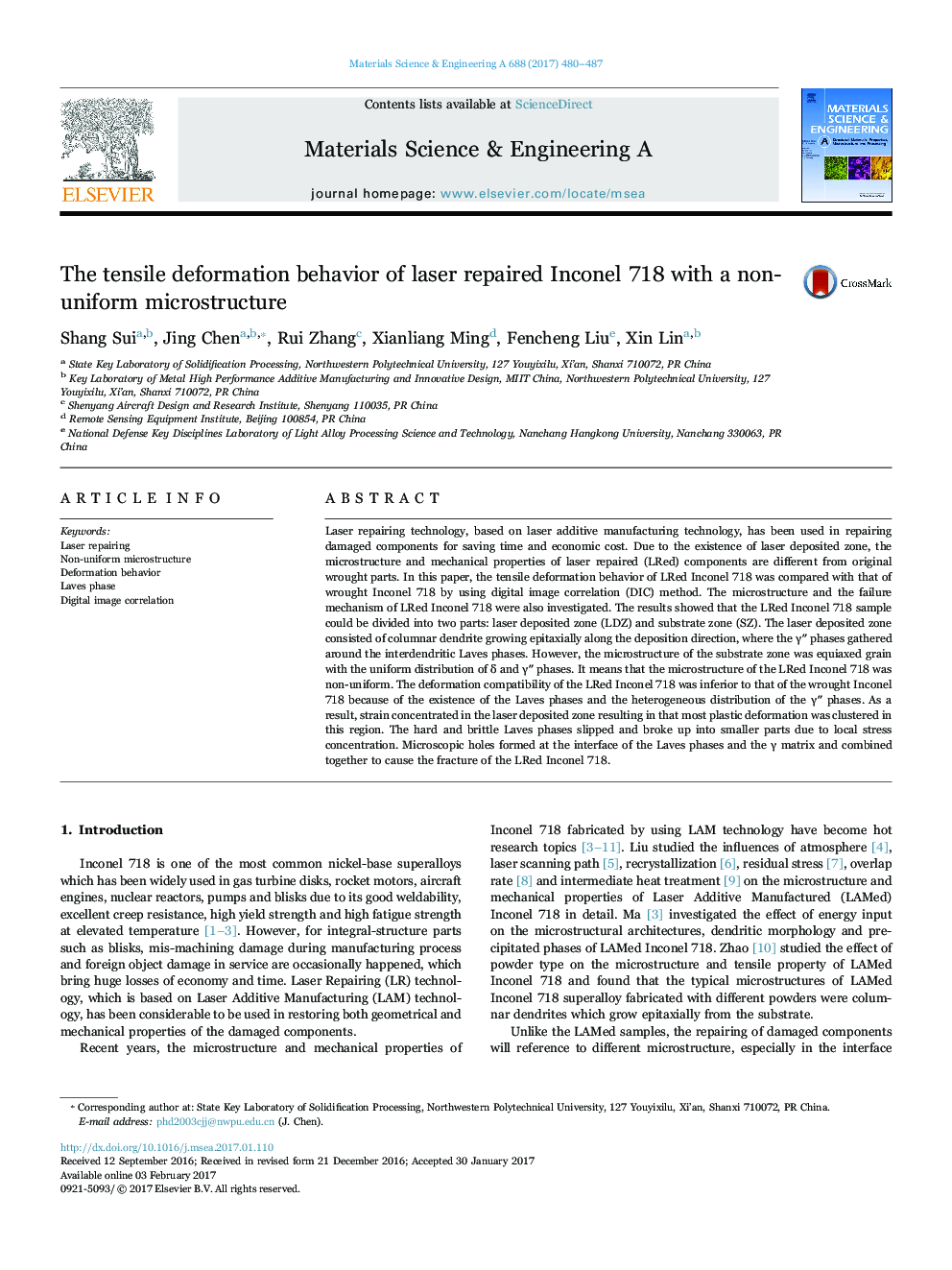| Article ID | Journal | Published Year | Pages | File Type |
|---|---|---|---|---|
| 5456218 | Materials Science and Engineering: A | 2017 | 8 Pages |
Abstract
Laser repairing technology, based on laser additive manufacturing technology, has been used in repairing damaged components for saving time and economic cost. Due to the existence of laser deposited zone, the microstructure and mechanical properties of laser repaired (LRed) components are different from original wrought parts. In this paper, the tensile deformation behavior of LRed Inconel 718 was compared with that of wrought Inconel 718 by using digital image correlation (DIC) method. The microstructure and the failure mechanism of LRed Inconel 718 were also investigated. The results showed that the LRed Inconel 718 sample could be divided into two parts: laser deposited zone (LDZ) and substrate zone (SZ). The laser deposited zone consisted of columnar dendrite growing epitaxially along the deposition direction, where the γⳠphases gathered around the interdendritic Laves phases. However, the microstructure of the substrate zone was equiaxed grain with the uniform distribution of δ and γⳠphases. It means that the microstructure of the LRed Inconel 718 was non-uniform. The deformation compatibility of the LRed Inconel 718 was inferior to that of the wrought Inconel 718 because of the existence of the Laves phases and the heterogeneous distribution of the γⳠphases. As a result, strain concentrated in the laser deposited zone resulting in that most plastic deformation was clustered in this region. The hard and brittle Laves phases slipped and broke up into smaller parts due to local stress concentration. Microscopic holes formed at the interface of the Laves phases and the γ matrix and combined together to cause the fracture of the LRed Inconel 718.
Related Topics
Physical Sciences and Engineering
Materials Science
Materials Science (General)
Authors
Shang Sui, Jing Chen, Rui Zhang, Xianliang Ming, Fencheng Liu, Xin Lin,
